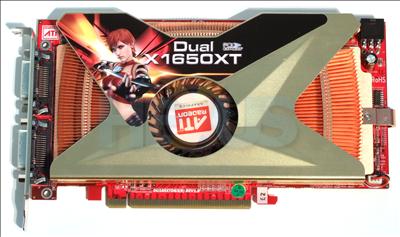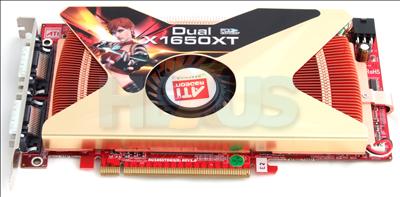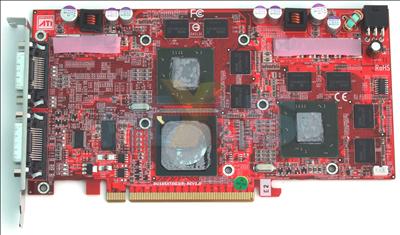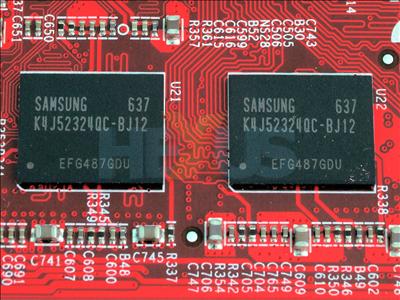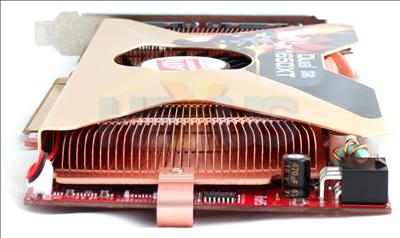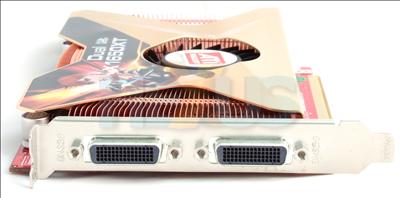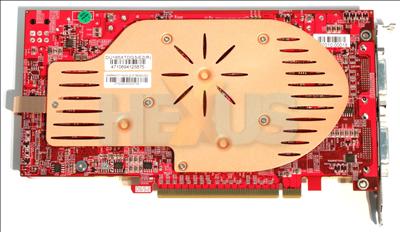Seeing double
Seeing double
The favoured method for outlandish AMD/ATI designs has been in designing a pre-CrossFired setup on a single board. That entails two GPUs, an internal interconnect linking said GPUs together and some head-scratching into how it's all going to be accomplished.We first saw Sapphire amalgamate two Radeon X1950 Pros on to an extra-large PCB. Potentially, such a design paved the way for a quad-CrossFire solution, run over two cards and four GPUs.
GeCube's opted for twinning Radeon X1650 XTs on to a single PCB, though.
GeCube X1650 XT Dual 512MiB
The near-card-sized heatsink hides a couple of RV560 cores that work in tandem to produce practically double the performance of a single Radeon X1650 XT. That's the theory, at least.
The PCB, whilst not in the same spatial league as the aforementioned Sapphire's, is roughly equivalent to a regular Radeon X1950 Pro's. Thankfully, GeCube has managed to restrict the heatsink from blocking off any adjacent slots; it's a single-slot design.
Bear in mind that the card weighs in at 712g - Radeon HD 2900 XT territory - and measures 210mm x 114mm.
Our testing highlighted that the cooler's fan was rather noisy at all times - it's not thermostatically-controlled. Further, the heatsink, whilst large, doesn't concurrently cool the memory modules.
Stripping it down, you see the two RV560 cores are apportioned their own 256MiB framebuffer, making 512MiB in total. GPU communication is facilitated by the interconnecting ASIC shown below the left-hand GPU.
For all intents and purposes, then, the GeCube X1650 Dual is what it seems, that is, two separate Radeon X1650 XT cards morphed on to one PCB.
A closer look at the memory shows it to be Samsung 1.2ns-rated GDDR3 that has an effective clocking of over 1600MHz. GeCube, though, plays it safe by stipulating the modules run at a just-above-stock 1377MHz. The core speed is left to the default 574MHz, however.
The weighty copper-bottomed cooler needs to keep three ASICs cool.
A single Radeon X1650 XT doesn't require additional power. Strap two on to a single PCB and, as you'd expect, the power requirement exceeds what's provided by the PCIe slot. The 6-pin connector, on the right, will be a familiar sight to owners of X1950-class hardware.
There appear to be no board-mounted sensors on the card, much like other Radeon X1650 XTs, by the way.
Both DVI ports provide single-link digital outputs. GeCube claims HDCP compliance but our testing, using CyberLink's BD/HD-DVD-checker and a pair of HDCP-enabled monitors, proved the contrary.
Brief summary
Effective performance relies upon the gaming title taking full advantage of ATI's multi-GPU CrossFire technology. The caveat is that you may well be left with single-GPU or sub-optimal performance if support isn't finely tuned.An interesting product that's based on technology which has now been superceded by AMD's Radeon HD 2000-series.






